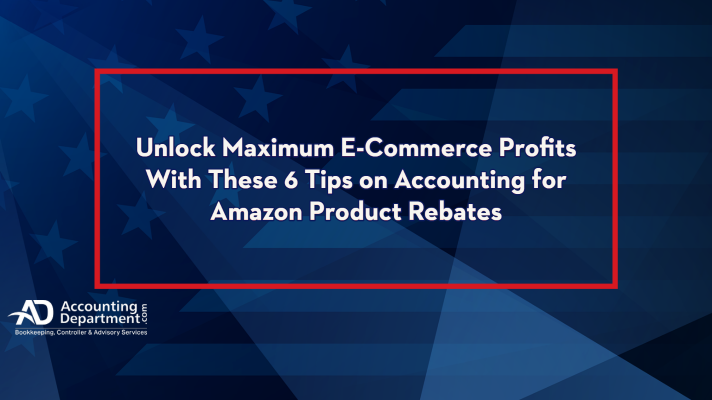A product rebate on Amazon is a type of promotion offered by manufacturers or sellers to incentivize customers to purchase their products. It typically involves offering a partial refund or discount on the purchase price of the product, either at the time of purchase or after the purchase has been made.
Product rebates can be a great way for Amazon sellers to increase sales and attract new customers, but they can also be complicated to manage and account for. It’s important for sellers to have a good understanding of how product rebates work and to properly track and manage them to ensure compliance with accounting standards and accurate financial reporting.
As an Amazon e-commerce seller, it is important to have a good understanding of accounting for product rebates. Product rebates can be an effective way to attract customers and increase sales, but they can also be complicated to track and manage. Here are some tips on how to handle accounting for product rebates as an Amazon e-commerce seller.
Understand the different types of rebates
There are two main types of product rebates: instant rebates and mail-in rebates. Instant rebates are applied at the time of purchase, while mail-in rebates require the customer to fill out a form and submit it to the manufacturer to receive a rebate check. It’s important to understand the difference between the two types of rebates and how they affect your accounting.
Create a rebate account
To properly track and manage product rebates, it’s important to create a separate account for them in your accounting system. This will make it easier to see the impact of rebates on your overall financial picture and ensure that you’re properly accounting for them.
Track rebates separately
When you receive a rebate from a manufacturer, it’s important to track it separately from your other income. This will make it easier to reconcile your accounts at the end of the month and ensure that you’re properly accounting for all income and expenses.
Keep accurate records
To ensure that you’re properly accounting for product rebates, it’s important to keep accurate records. This includes tracking the rebate amount, the date it was received, and any other relevant information. It’s also a good idea to keep copies of any rebate forms or documentation to help support your records.
Factor in the cost of rebates
When calculating your profitability as an Amazon e-commerce seller, it’s important to factor in the cost of product rebates. This will give you a more accurate picture of your net income and help you make better business decisions.
Consult with a professional
If you’re unsure about how to properly account for product rebates, it’s always a good idea to consult with a professional accountant. They can provide guidance on best practices for accounting for product rebates and ensure that you’re in compliance with all relevant accounting standards.
In conclusion, accounting for product rebates can be complicated, but by understanding the different types of rebates, creating a rebate account, tracking rebates separately, keeping accurate records, factoring in the cost of rebates, and consulting with a professional, you can effectively manage product rebates as an Amazon e-commerce seller. By doing so, you’ll be able to make better business decisions and ensure the long-term success of your e-commerce business.





